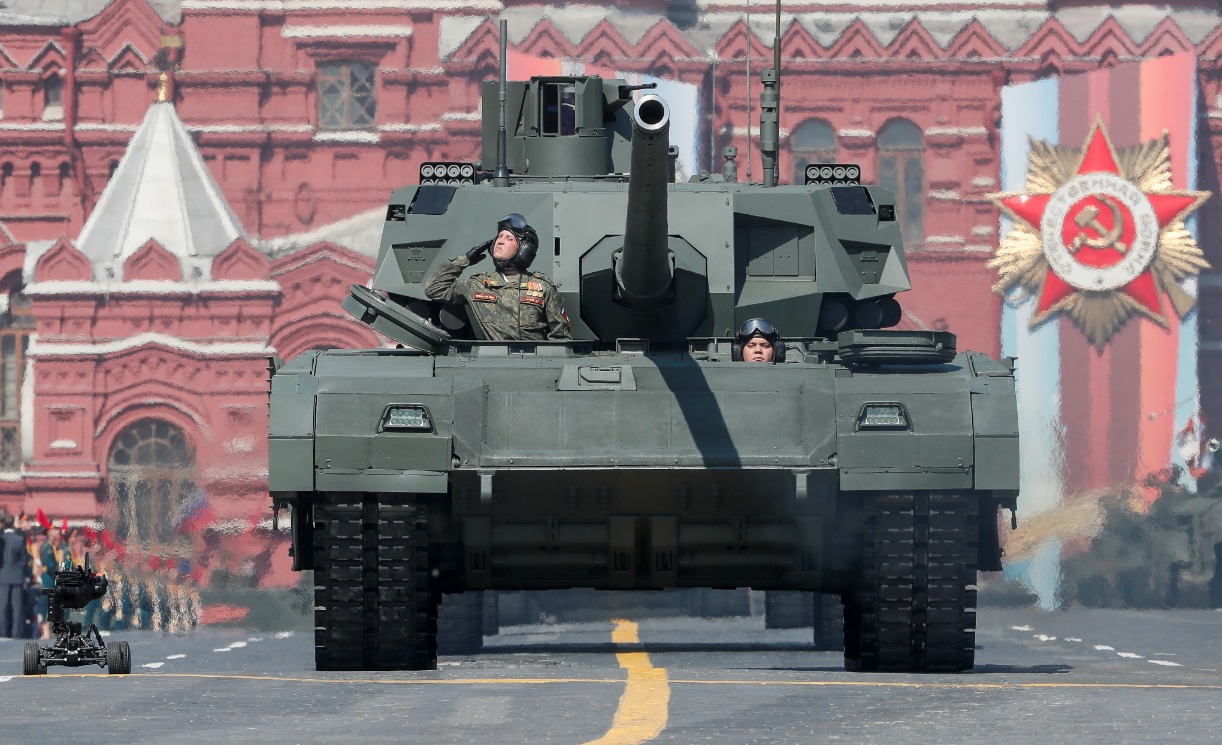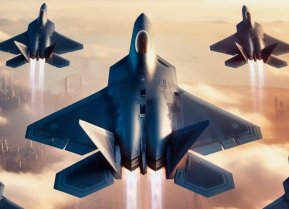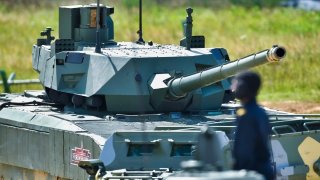T-14 Armata: Russia's Tank Nightmare Just Won't End
The T-14 Armata, Russia's latest Main Battle Tank, has faced significant challenges despite its advanced design and capabilities. Initially hailed as a revolutionary advancement in tank technology, the T-14 has struggled with practical deployment issues, particularly during the ongoing conflict in Ukraine.
Summary: The T-14 Armata, Russia's latest Main Battle Tank, has faced significant challenges despite its advanced design and capabilities. Initially hailed as a revolutionary advancement in tank technology, the T-14 has struggled with practical deployment issues, particularly during the ongoing conflict in Ukraine. The high cost and complexity of the tank have made the Russian military hesitant to use it extensively in combat, fearing the loss of such expensive and sophisticated machinery. Production goals have fallen short, with far fewer units produced than planned. Moreover, the T-14's performance in Ukraine has been underwhelming, leading to its quick withdrawal from the frontlines. These issues highlight a broader problem with high-tech military equipment that is too valuable to risk in battle, mirroring similar challenges faced by other countries with expensive defense assets.
Russia's T-14 Armata Struggles in Ukraine: High Costs and Practical Challenges Limit Deployment
The Russians have dug a hole for themselves with their newest Main Battle Tank (MBT), the much-ballyhooed T-14 Armata. Even though a full-blown tank war has erupted in neighboring Ukraine, with massive numbers of older Soviet era tanks being thrown into the meat grinder there for the last two years, many observers have wanted to know where the T-14 has been.
After all, the T-14 Armata was hailed as the “most revolutionary tank in a decade,” by a senior British defense official after the Russians first announced the development of the tank over a decade ago. Its performance in the Ukraine War was uninspiring and, more importantly, its complexity and cost meant that the Russian military was reticent to deploy these monsters because replacing them would have been difficult.
Therefore, the Russians had poured so many resources, time, and effort into building these modern marvels that they quickly discovered that these systems were not the weapons platform they were designed to be.
The T-14 Armata is Russia’s Boondoggle
No, the Russian T-14 Armata was a monument to the Russian defense industry’s vanity. And like all monuments, they are most effective when seen or talked about. But in terms of practical applications, they don’t have any. Because to deploy these systems in combat and risk losing them would impose far greater costs on the Russians than these systems could ever impose upon a rival force.
Basically, the Russians have on a smaller scale replicated the worst excesses of the US defense industry when it comes to the US Navy’s aircraft carriers. Like the T-14 Armata MBT, the American aircraft carrier is a work of engineering brilliance.
At least on paper.
And because of their cost, the risk of losing an aircraft carrier in battle poses undue strategic costs on the Americans deploying them in battle.
The Russians are now experiencing something similar with their T-14 Armata.
To compound matters for Moscow, they don’t even have enough of these systems to make much of a difference or to be able to risk losing even one of these systems in combat. The Russian Army was supposed to procure upwards of 2,300 units of the T-14 Armata MBTs between 2015 and 2020.

That number in reality has fallen far short of the 2,300 mark. Even from its first public reveal, in 2015 during a “Victory Day” parade in Moscow, the T-14 struggled. It broke down in the middle of the parade, for all to see.
The T-14 Didn’t Cut It In Combat
Reports from the summer of 2023, when the T-14s were deployed—albeit briefly—to the frontlines of Ukraine indicate that they were quickly withdrawn. US intelligence took away that the tanks underperformed in their roles.
That potentiality, coupled with the expense of these systems, has made the T-14 Armata a wasteful investment for Russia.
The T-14 Specs
First, let’s take a look at the actual specs of the tank. Whatever problems it may have had in Ukraine, the fact of the matter is that most Western analysts concurred with the Russians that the T-14 Armata MBTs were truly revolutionary.
So, was everyone, Russian and Westerner alike, wrong?
The T-14 was born out of the cancellation of Russia’s post-Soviet era MBT concept, the T-95 “Black Panther.” As soon as the Russian Army passed on the T-95, work on the T-14 Armata began.
A key aspect of the T-14 is that its crew compartment has far greater protection than previous Soviet-era tanks.
What’s more, its combat capabilities are augmented by an automated turret mounting a 125mm 2A82-1M smoothbore gun. That turret can pop off up to 45 rounds. And get this: the main gun on the tank can fire laser-guided missiles.
Layers upon layers of protection for the tank crew mark a decisive difference from previous tanks. For example, the T-14 is outfitted with Malachit explosive reactive armor along with the AFGHANIT active protection system. The T-14 Armata is probably the most advanced MBT that Russia has ever produced in its long history of developing such systems.
On paper, it is lightyears ahead of the competition.
But Russia, while it has managed to overcome much of the Western economic sanctions directed against their defense industrial base, still struggles to produce wildly sophisticated systems en masse, such as the T-14.
The Problems with the T-14 are Boundless
It's not only production woes that have plagued the T-14, making it cost prohibitive to risk losing in battle. As my colleague, Harrison Kass, has accurately outlined, the Russians defied all logic behind engineering tanks. Rather than design the platform and then find an adequate engine to power it, the Russians built the T-14 Armata around the engine that powers it today.
That engine, A-85-3 engine, is far too complex and hard to maintain—especially in the throes of combat.
The Russians possess a simpler, tried-and-true engine—the V-9282F—but the Armata is specifically designed to accommodate only the shoddy A-85-3 engine. So, between this issue and the fact that every aspect of the Armata is very complex and expensive, the Russians have created a weapon system that it cannot afford to lose, that its defense industrial base cannot adequately replace after losing it in combat, and that has a wildly unreliable engine.
Given that the Ukrainians, despite their consistent acts of heroism in combat, are losing the war, it is possible that the Russians may again deploy the Armata when things are truly hopeless for the Ukrainians and the risk of losing any T-14s in combat is low.
It is also possible that, after the Ukraine War ends and Russia can declare victory, with their heightened defense industrial base, the Russians will work out the kinks of the T-14 Armata.
As of now, however, the T-14, for all its amazing, next-generation features, is probably not worth the cost. The Russians have seriously erred by putting all their strategic eggs in this particular basket.
About the Author
Brandon J. Weichert, a National Interest national security analyst, is a former Congressional staffer and geopolitical analyst who is a contributor at The Washington Times, the Asia Times, and The-Pipeline. He is the author of Winning Space: How America Remains a Superpower, Biohacked: China’s Race to Control Life, and The Shadow War: Iran’s Quest for Supremacy. His next book, A Disaster of Our Own Making: How the West Lost Ukraine, is due October 22 from Encounter Books. Weichert can be followed via Twitter @WeTheBrandon.
All images are Creative Commons.


